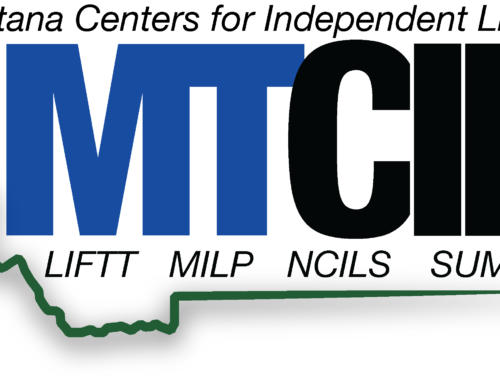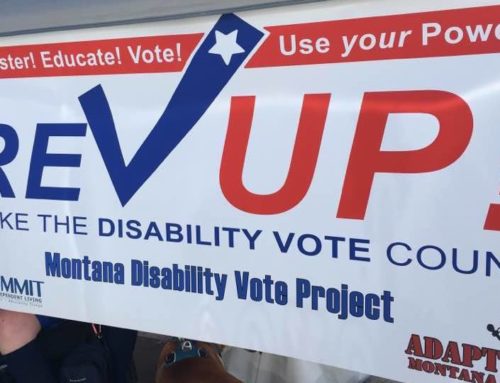July is a month when we celebrate our freedom as a country and as individuals, and recommit to protecting liberty for ourselves and our loved ones. Not only is it the month in which the Declaration of Independence was signed, but it is also the month in which the Americans with Disabilities Act (ADA) was signed in 1990.
The ADA was a hard-won acknowledgement that people with disabilities are citizens like anyone else, and have the right to access not just buildings, but the activities inside them, employment in community businesses, life in the community, community transportation and so much more.
Disability is an equal opportunity experience, one we may be born with, or acquire along the way from a health condition, the natural aging process, or an incident of some kind. The ADA, along with other complementary laws, has been instrumental in the momentous shift in the attitudes and expectations of the 125,000 Montanans with disabilities, their families, friends and communities.
Before the passage of the ADA, Justin Dart, former EEOC Commissioner, and a member of the family that gave the world Tupperware, traveled with his wife Yoshiko, to every state in the country, including Montana, to document the lack of access and exclusion experienced by citizens with disabilities. Their reports documented the need for the ADA. When the bill struggled in Congress, members of ADAPT, a national grassroots disability rights organization, gathered in Washington, were helped out of their wheelchairs, and crawled up the steps of the US Capitol Building to demonstrate its inaccessibility. The “Capitol Crawl” has been credited as the action that finally achieved passage of the ADA. When then President, George H.W. Bush, signed the ADA into law, with Justin Dart and others by his side, he said, “Let the shameful wall of exclusion finally come tumbling down.”
As monumental as the ADA has been, more remains to be done. As more information and communication move online, accessibility features must become commonplace and simple for designers to implement. Young people with disabilities must receive the support they need to transition successfully into the adult world alongside their peers. Policy and attitudinal barriers must be knocked down for the more than 60 percent of working-age people with disabilities currently excluded from the work force, so they can contribute their talents to our state. Segregation in some aspects of life is still tolerated, and sometimes encouraged by outdated policies that must be changed.
In 2007, as part of the movement to get the ADA Amendments Act passed by Congress, Montana was chosen as one of the states to receive a visit from the Road to Freedom bus tour. The Road to Freedom bus, which can be seen at www.roadtofreedom.net, is covered in historic photos of the disability rights movement and is accompanied by renown photographer, Tom Olin, whose photos chronicling the movement have been featured in the Smithsonian Institute in Washington, D.C. Tom’s photos also appear as a part of permanent exhibits in the National Civil Rights Museum in Memphis and the National Center for Civil and Human Rights in Atlanta.
We invite the entire state of Montana to join in the Celebration of the 25th Anniversary of the ADA when the ADA Legacy Tour Road to Freedom bus revisits Montana this summer. Enjoy fun activities, browse vendor booths, take photos with the bus, and celebrate at Montana’s ADA 25th Anniversary events: July 2 in Billings at Kmart from 8 a.m.-2 p.m., July 3 in Great Falls at Lions Park from 10 a.m.-12 p.m., July 3 in Helena at the Montana State Capitol from 2 p.m.-5 p.m., and July 4 in Missoula at Caras Park from 10 a.m-2 p.m. Come be a part of disability history, and enjoy yourself while pledging your commitment to help build a stronger future for Montana and all her citizens.
After all, July is a time to celebrate independence – for everyone.




